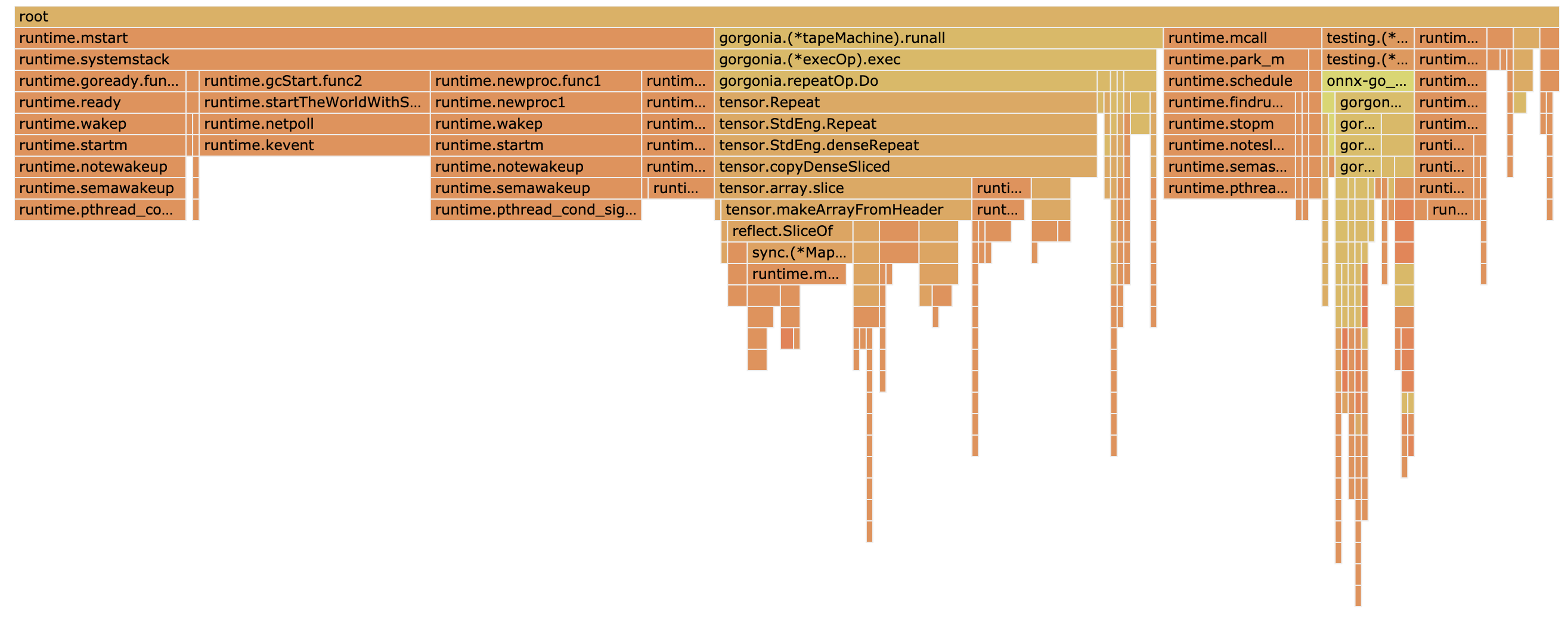This is a Go Interface to Open Neural Network Exchange (ONNX).
onnx-go contains primitives to decode a onnx binary model into a computation backend, and use it like any other library in your go code. for more information about onnx, please visit onnx.ai.
The implementation of the the spec of ONNX is partial on the import, and non-existent for the export.
For the Go developer who needs to add a machine learning capability to his/her code, onnx-go is a package that facilitates the use of neural network models (software 2.0) and unlike any other computation library, this package does not require special skills in data-science.
Warning The API is experimental and may change.
This is a new version of the API.
The tweaked version of Gorgonia have been removed. It is now compatible with the master branch of Gorgonia.
Some operators are not yet available though.
A utility has been added in order to run models from the zoo.
check the `examples` subdirectory.Install it via go get
go get github.com/owulveryck/onnx-go
onnx-go is compatible with go modules.
Those examples assumes that you have a pre-trained model.onnx file available.
You can download pre-trained modles from the onnx model zoo.
This example does nothing but decoding the graph into a simple backend. Then you can do whatever you want with the generated graph.
// Create a backend receiver
backend := simple.NewSimpleGraph()
// Create a model and set the execution backend
model := onnx.NewModel(backend)
// read the onnx model
b, _ := ioutil.ReadFile("model.onnx")
// Decode it into the model
err := model.UnmarshalBinary(b)This example uses Gorgonia as a backend.
import "github.com/owulveryck/onnx-go/backend/x/gorgonnx"At the present time, Gorgonia does not implement all the operators of ONNX. Therefore, most of the model from the model zoo will not work. Things will go better little by little by adding more operators to the backend.
You can find a list of tested examples and a coverage here.
func Example_gorgonia() {
// Create a backend receiver
backend := gorgonnx.NewGraph()
// Create a model and set the execution backend
model := onnx.NewModel(backend)
// read the onnx model
b, _ := ioutil.ReadFile("model.onnx")
// Decode it into the model
err := model.UnmarshalBinary(b)
if err != nil {
log.Fatal(err)
}
// Set the first input, the number depends of the model
model.SetInput(0, input)
err = backend.Run()
if err != nil {
log.Fatal(err)
}
// Check error
output, _ := model.GetOutputTensors()
// write the first output to stdout
fmt.Println(output[0])
}In the examples subdirectory, you will find a utility to run a model from the zoo, as well as a sample utility to analyze a picture with Tiny YOLO v2
The protobuf definition of onnx has is compiled into Go with the classic protoc tool. The definition can be found in the internal directory.
The definition is not exposed to avoid external dependencies to this repo. Indeed, the pb code can change to use a more efficient compiler such
as gogo protobuf and this change should be transparent to the user of this package.
In order to execute the neural network, you need a backend able to execute a computation graph (for more information on computation graphs, please read this blog post
This picture represents the mechanism:
onnx-go do not provide any executable backend, but for a reference, a simple backend that builds an information graph is provided as an example (see the simple subpackage).
Gorgonia is the main target backend of ONNX-Go.
a backend is basically a Weighted directed graph that can apply on Operation on its nodes. It should fulfill this interface:
type Backend interface {
OperationCarrier
graph.DirectedWeightedBuilder
}type OperationCarrier interface {
// ApplyOperation on the graph nodes
// graph.Node is an array because it allows to handle multiple output
// for example a split operation returns n nodes...
ApplyOperation(Operation, ...graph.Node) error
}An Operation is represented by its name and a map of attributes. For example the Convolution operator as described in the spec of onnx will be represented like this:
convOperator := Operation{
Name: "Conv",
Attributes: map[string]interface{}{
"auto_pad": "NOTSET",
"dilations": []int64{1, 1},
"group": 1,
"pads": []int64{1, 1},
"strides": []int64{1, 1},
},
}Besides, operators, a node can carry a value. Values are described as tensor.Tensor
To carry data, a Node of the graph should fulfill this interface:
type DataCarrier interface {
SetTensor(t tensor.Tensor) error
GetTensor() tensor.Tensor
}onnx-go provides a some utilities to test a backend. Visit the testbackend package for more info.
Contributions are welcome. A contribution guide will be eventually written. Meanwhile, you can raise an issue or send a PR. You can also contact me via Twitter or on the gophers' slack (I am @owulveryck on both)
This project is intended to be a safe, welcoming space for collaboration, and contributors are expected to adhere to the Contributor Covenant code of conduct.
MIT.










